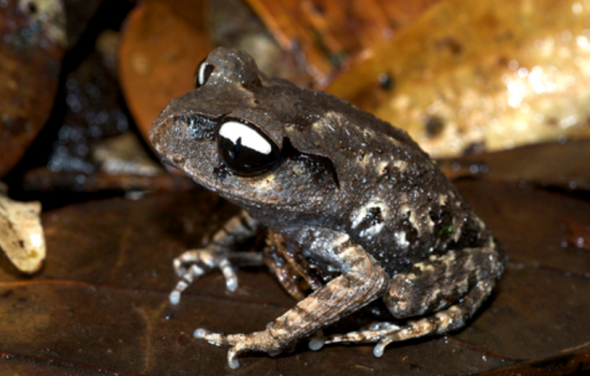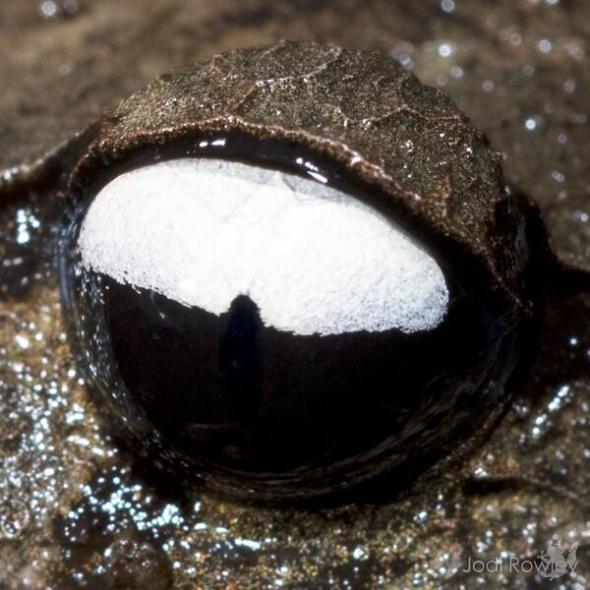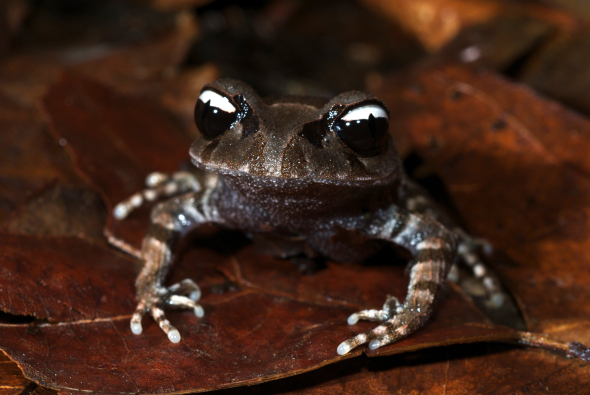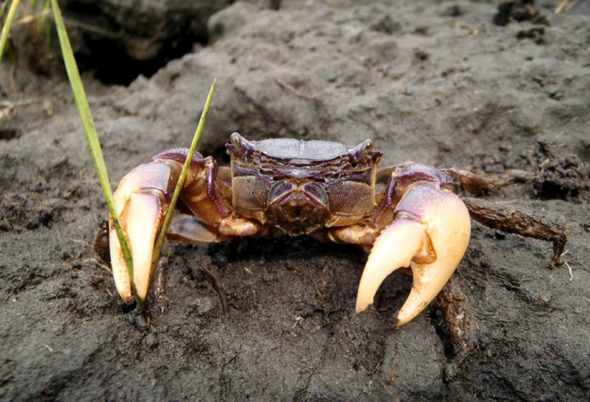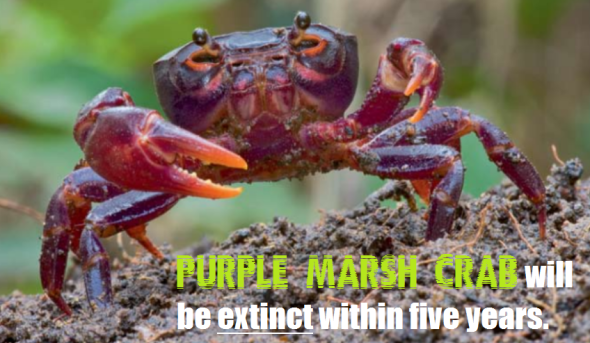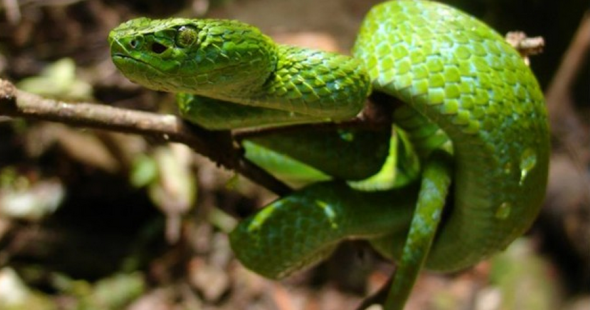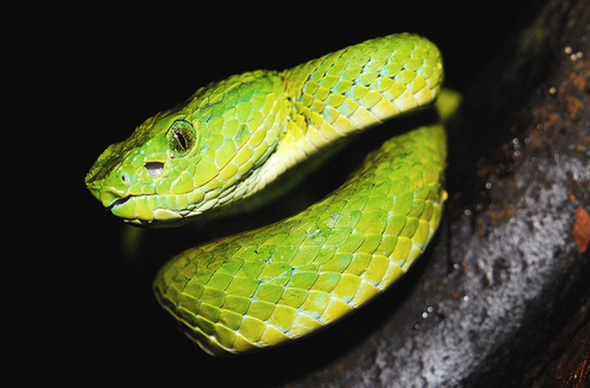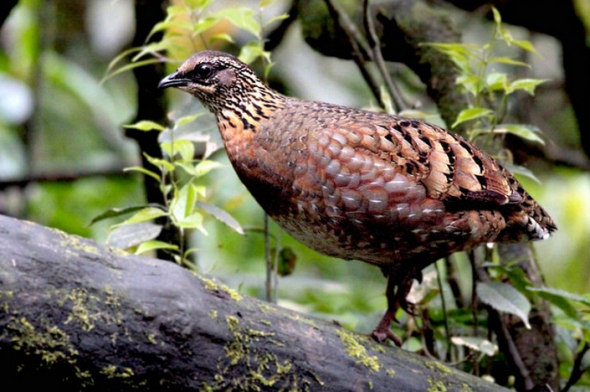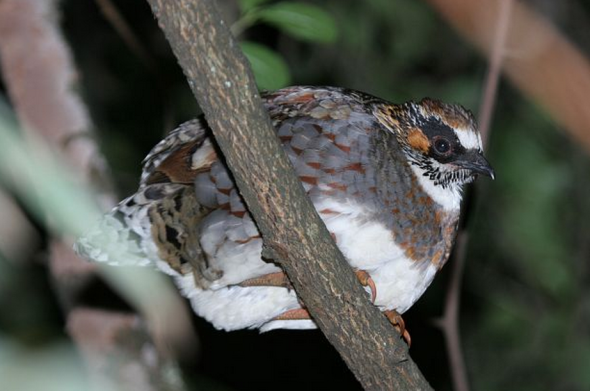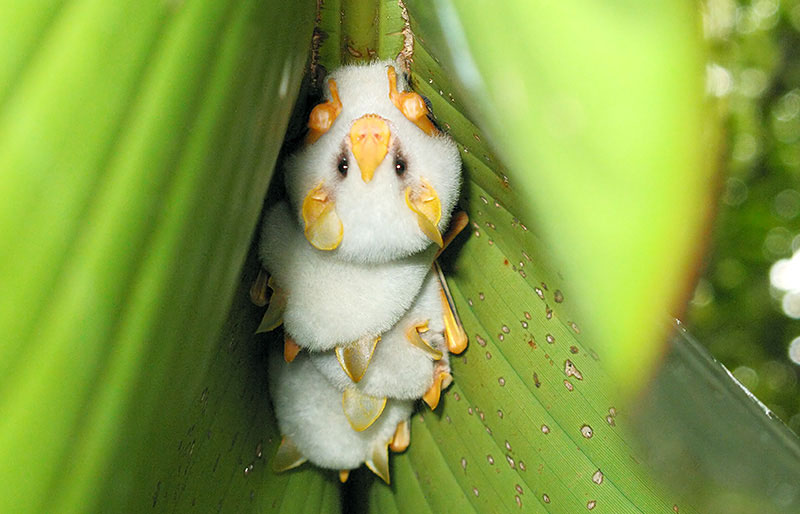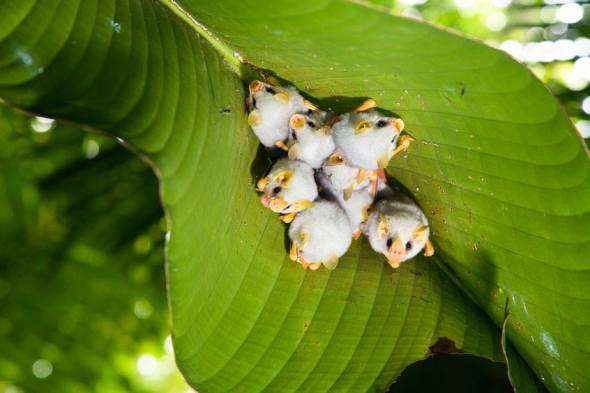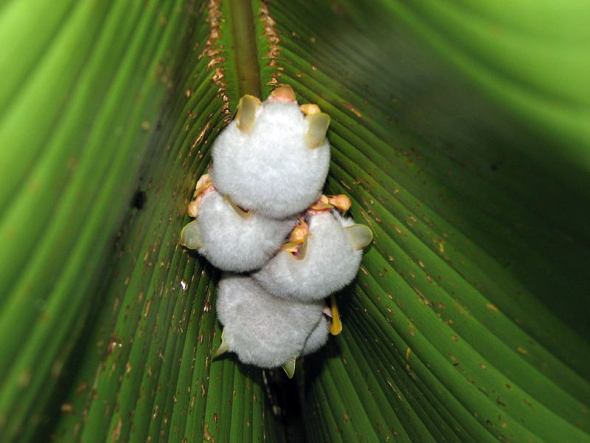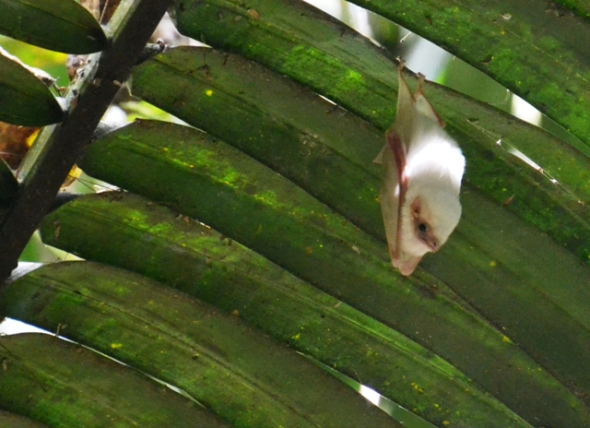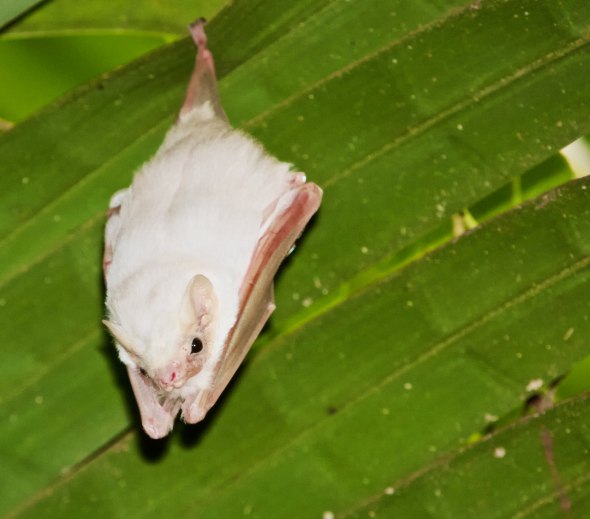ENDANGERED SPECIES MONDAY | SUNDASCIURUS HIPPURUS
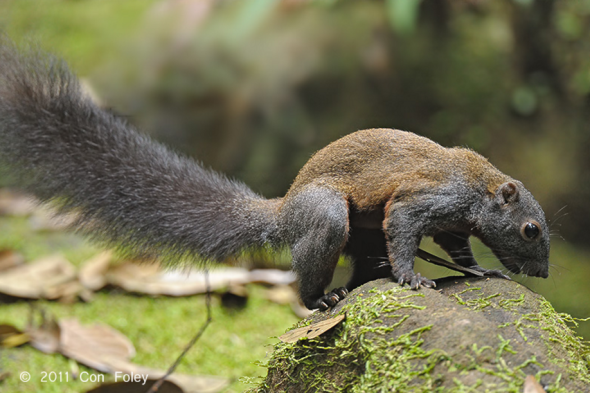
ENDANGERED SPECIES MONDAY | SUNDASCIURUS HIPPURUS
This Mondays (E.S.P) post - [Endangered Species watch Post] I am documenting on the horse tailed squirrel, scientifically identified as Sundasciurus hippurus. (Image: Horse tailed squirrel. Credits: Con Foley)
Listed as [near threatened] the species was first discovered back in 1831 by French Dr Étienne Geoffroy Saint-Hilaire (15 April 1772 – 19 June 1844) who was a French naturalist who established the principle of “unity of composition”. He was a colleague of Jean-Baptiste Lamarck and expanded and defended Lamarck’s evolutionary theories.
Geoffroy’s scientific views had a transcendental flavor (unlike Lamarck’s materialistic views) and were similar to those of German morphologists like Lorenz Oken. He believed in the underlying unity of organismal design, and the possibility of the transmutation of species in time, amassing evidence for his claims through research in comparative anatomy, paleontology, and embryology.
Dr Geoffroy ‘allegedly’ named the squirrel ‘the horse tailed squirrel’ because the squirrels tail resembled that of a horse tail, although even I myself find that somewhat difficult to digest, as in all due honesty the tail looks more like a bushy tail, which horses don’t really host. Horses tend to have long, slender and non-bushy tails, while others do host a type of busy but lose tail. I could be wrong?!
While as yet I cannot prove this, I do believe that Dr Geoffroy may have named the squirrel after a wild dwarf Asiatic horse endemic to South East Asia - that as yet we environmentalists have as yet to discover more about, furthermore that species of horse is likely to be extinct.
Moving on and (as explained) the horse tailed squirrel has been listed as [near threatened]. From 1996-2012 the species was placed into the category of [lower risk/least concern]. Lower risk/least concern is defined as: A taxon is Least Concern when it has been evaluated against the criteria and does not qualify for Critically Endangered, Endangered, Vulnerable or Near Threatened. Widespread and abundant taxa are included in this category.
International Animal Rescue Foundation Asian Environmental Scientists have been studying this species (among others) and can confirm from camera traps that the mammal’s populations are still declining significantly. However to what extent we’re still unsure.
As yet there have been ‘no reported extinctions’ within anyone of the species endemic countries being: Brunei Darussalam; Indonesia (Kalimantan, Sumatera); Malaysia (Peninsular Malaysia, Sabah, Sarawak) and Thailand. Since 2012 environmental fauna scientists have tried in vain to establish a mean population count, unfortunately as yet we (the organisation) and non-related organisations cannot determine a true population count.
Back in 2004 Dr’s Han and Giman pers. comm stated that the species was common, furthermore there was no evidence to prove the species was severely fragmented, or nearing endangered. The species prefers to inhabits lowland forests, however is also located in secondary forests too. Scientists reported that within these secondary forests species populations were on the decline.
Unlike your normal European squirrel the species can commonly be located at ground level foraging for food ranging from nuts, fruits, seeds and insects. Interestingly the species is diurnal (again unlike the European squirrel). Diurnal means the species will be active either during the day or night. Whereas the European squirrel is normally pretty active during the daytime, then rests during the night.
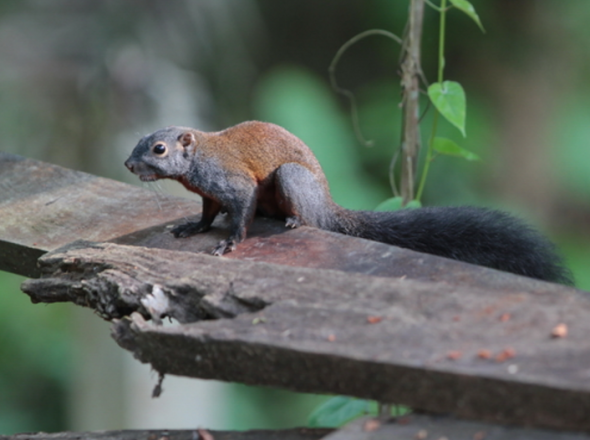
Image: Horse tailed squirrel: Photographer unknown
While the species ‘often lives within the trees’, horse tailed squirrels will spend a majority of their time at ground level. It has been suggested that one of the reasons for low densities of this species in Malaysian tropical rain forest is competition from the great variety of other arboreal vertebrates (such as birds, and especially primates) for food, especially fruits and leaves, which are among the food items preferred by squirrels.
There are by few very few threats actually known, however don’t take that as positive news. The species is threatened by habitat loss due to logging and agricultural conversion. I expect the first extinctions are likely to be witnessed within Malaysia (based on past and current research). Malaysian deforestation and palm oil plantations all pose a very high threat to the horse tailed squirrel as well as many other species of flora and fauna.
Nearly 60% of Malaysia is still covered with natural rain forest, unfortunately much of Malaysia forests are devoted to cash crop plantations, particularly oil palm and rubber, with tree crops occupying 17% of Malaysia’s land area. These are ideally suited to Malaysia’s hot, wet, and humid climate.
While many of us are aware of ‘palm oil devastation’ which is probably by far the biggest threat to a wide number of animals and plants - including the horse tailed squirrel. I would also like to point out to many non-meat and dairy consumers (I.e: Vegans), that while coconut plantations are for now considerably small. These plantations are still being developed and farmed within areas that once saw pristine green forests - now nothing more than a brown churned up heap of land growing and harvesting coconuts too.
In Malaysia, coconut is the fourth important industrial crop after oil palm, rubber and paddy in terms of total planted area. It is also one of the oldest agro-based industries. As an industry, coconut contributes very little to the overall economy of Malaysia (contribution to export earnings of about 0.08% in 2006).
Recent competition with oil palm for land has also resulted in the decline of the total area under coconut cultivation: in 2001, the area was about 151,000 ha and this has gradually decreased to the acreage of 109,185 ha in 2007. Based on the estimates given under the 9th Malaysia Plan, it is anticipated that the acreage will consolidate to around 80,000 ha by 2010. However regardless of this ‘alleged decline’ most if not all coconut plantations are farmed within forests where species such as the horse tailed squirrel is inhabiting.
The species is found in several protected areas, including Pasoh Forest Reserve. Environmentalists state the need for further comparative study on this species’ abundance, density and distribution and its relationship to forest structure or habitat quality, spatially and temporally, in hill dipterocarp forest of Malaysia is greatly needed.
For now the future of the horse tailed squirrel is uncertain. I’m doubtful the species will remain extant within Malaysia for much longer - with possible localized extinctions witnessed here soon. More research needs to be undertaken on the species, furthermore we also need to research just how much ‘pristine green forest is being converted for fruit, cereal crops, oils and plant milk crops’ rather than just palm oil. While I find palm oil agriculture incredibly concerning. Knowing that anyone of our vegan, vegetable and fruit crops is originating from areas where animals are being killed - is just as concerning too.
Thank you for reading.
Dr Jose C. Depre PhD. MEnvSc. BSc(Hons) Botany, PhD(NeuroSci) D.V.M.
Master of Environmental Botanical & Human Science.
(Environmental, Botanical & Human Scientist).
Endangered Species Monday: Afrithelphusa monodosa.
Endangered Species Monday: Afrithelphusa monodosa
Warning: Extinction is now Inevitable
This Mondays (E.S.P) -Endangered Species watch Post I focus on a species of fresh water crab that’s rarely spoken about within the theater of conservation, or animal rights forums. Identified by Mr Bott from which I know little on and about this particular species of marsh crab is currently listed as endangered. Rarely do I document on a species of animal that I and other conservationists know will be extinct within the next five years. My aim for this Monday’s endangered species column is to raise awareness about the plight of this little creature, in a way I hope will force Cites and the Guinea government to now implement emergency evasive action to halt extinction immediately. (Image: Purple Marsh Crab, photographer unknown)
I must also point out that one must not confuse the [common name] of this species [above], identified back in 1959, to that of the United States [Purple Marsh Crab]. Professor Linnaeus created the nomenclature system for a reason, and yet again I am seeing two species of animals that hold the same common names being confused with one-another. Sesarma reticulatum is not under any circumstances related to the Afrithelphusa monodosa pictured above and below.
Endemic to Guinea the species was listed back in 1996 as [critically endangered]. However since the last census was conducted back in [2007] the Purple Marsh Crab has since been submitted into the category of [endangered]. Unfortunately as yet there remains no current documentation on population size, furthermore from the 1996 census, marine conservation reports suggest that no fewer than twenty specimens have been collected from the wild. To date the ‘estimated’ population size stands at a mere 2.500 mature individuals.
Back in 1959 Mr Bott identified the specimen as Globonautes monodosus however from 1999 the species was re-named as Afrithelphusa monodosa. The Purple Marsh Crab is one of only five species in the two genera of which belong to a very rare group of fresh water crabs that are still endemic to the Guinea forests within the block of Western Africa. All five specimens within the two genera are listed as either [endangered or critically endangered], and as such its quite likely that all five specimens will become extinct within the next five to eight years, or possibly even sooner. It is without a doubt that one of the next species on the planet to go extinct will be the Purple Marsh Crab.
Allegedly new specimens have been discovered since [1996] however these reports are somewhat sketchy. When I last documented on the specimen back in 2010 there were no conservation efforts or any projects in the planning process that would help preserve the crabs future survival. We are now in 2015 and I have yet to witness any conservation projects planned or taking place, which I find rather frustrating. As explained the species will be extinct within a matter of years of which the Convention on International Trade of Endangered Species (Cites) should be protecting.
A. monodosa lives within the Guinea swamps and all year round wetland habitat within the northwestern Guinea. The original vegetation cover found at the farmland near the village of Sarabaya where this species was recently collected lies in southern guinea savannah in the semi-deciduous moist forest zone. Specimens of A. monodosus were collected from cultivated land from burrows dug into permanently moist soil each with a shallow pool of water at the bottom. At the end of the dry season after a six-month period without rain the soil in this area nevertheless remains wet year round, so this locality either has an underground water table close to the surface, or a nearby spring. The natural habitat of A. monodosus is still unknown but presumably this cultivated land was originally a permanent freshwater marsh.
There were no nearby sources of surface water and it is clear that these crabs do not need to be immersed in water (as do their relatives that live in streams and rivers), and that A. monodosus can meet its water requirements (such as keeping its respiratory membranes moist and osmoregulation of body fluids) with the small amount of muddy water that collects at the bottom of their burrow. This species is clearly a competent air-breather and has a pair of well-developed pseudol.
Image: Credited to Piotr Naskrecki. Purple Marsh Crab.
Current threats
To be truthfully honest I feel documenting on the current threats is in reality a waste of my time because both the Guinea government and Cites have known of these threats for many years. Yet little if any actions are being taken to suppress these threats. Either way I will document on them in the hope that someone will push for protection or whip into action a protective project sooner rather than later.
To date the species hasn’t been listed on either Cites (I-II) Appendix’s, the major present and future threats to this species include habitat loss/degradation (human induced) due to human population increases, deforestation, and associated increased agriculture in northwest Guinea.
International Animal Rescue Foundation Africa propose the following actions to be undertaken immediately:
- Up to date assessment of population size and location of any new and old habitats documented.
- Surveys to asses diets, predators, diseases and behavior.
- Investigations to locate new subspecies.
- Protection zones established within the highest populated zones.
- Liaising the Guinea government for funding of conservation projects.
- Listing of the species in (I Appendix) Cites.
- Community education and awareness programs.
- Removal of healthy and gene strong species for captive breeding programs.
Crabs Role within the Eco-System
Crabs are one of the major decomposes in the naval environment. In other terms, Crabs help in cleaning up the bottom of the sea and rivers by collecting decaying plant and animal substance. Many fish, birds and sea mammals rely on crabs for a food source. Regardless of if this is one species with low individual populations or not, extinction will only harm other animals. Furthermore will reduce other species food sources. The video below depicts the [Marsh Crabs] and their normal natural environment. The species in question which is identical to the Guinea Purple Marsh Crab is not included within the video but is related to the five genera.
Thank you for reading.
Dr Jose C. Depre
Environmental and Botanical Scientist.
info@international-animalrescue-foundation.org.uk
Endangered Species Friday - Arborophila rufipectus
Endangered Species Friday - Arborophila rufipectus
This Friday’s endangered species I document on yet another species of bird that’s sadly been added to International Animal Rescue Foundation’s Bird Watch Project. Scientifically identified as the Arborophila rufipectus and commonly known as the Sichuan Partridge the species is listed as endangered - nearing extinction. (Image adult Sichuan Partridge). Listed as a nationally-protected species in China. In 1998, it was recorded in Mabian Dafengding Nature Reserve, where there was estimated to be 192 km2 of potentially suitable habitat.
Identified by Dr Boulton in 1932 the species falls into the phasianidae family. A. rufipectus is restricted to its endemic range of China from which its known to inhabit the south-central Sichuan, China with some sketchy reports of the species documented within Yunnan.
Reporting from Singapore where one of five of our Asiatic Bird Watch Projects are situated, environmental teams stipulated from their visits into China within the past fourteen months, no current camera trappings of the species have been recorded within its native range, or ranges where past census’s have been undertaken.
Furthermore the team exhausted all other searches by widening the search covering a total of 2,100 km2. Observations were undertaken in key areas where it was deemed the Sichuan Partridge may be inhabiting taking into consideration food sources, areas of forest that hadn’t been logged while communicating to local hunters, poachers and, locals within the area.
Graduate Lee Won - International Animal Rescue Foundation’s Bird Watch Project CEO stated “We covered an area over the 1,700 km2 setting camera traps within Sichuan and Yannan (2014-2015). The traps were in place for exactly 14 months of which not one single individual or even a pair of Sichuan Partridges were recorded, which brings me and the team to the conclusion that its quite possible extinctions have already occurred, western environmental organisations have as yet to catch up on this data”.
Lee Won and the team that are working within extreme environments stated that vast deforestation is increasing within the birds natural environment of which enforcement and environmental protection remains to be seen. “If Chinese authorities and the Department of Forests and Environment do not protect the Yunnan forests there will be little flora or fauna remaining within this area by 2030” Won stated. The situation is more than dire, its tragic Lee confirmed.
With populations still recorded as “decreasing” the last known census recorded from 1996-1997 recorded an “estimated” total of 806 to 1,772 mature individuals (final count stood at 1,500-3,749). So from Lee Won and his teams evaluations its quite possible that extinction has occurred of which evidence will be submitted in due course to the International Union for the Conservation of Nature (IUCN).
Dai bo (2007) stated that new sightings of the Sichuan Partridges have been recorded within Laojunshan Nature Reserve numbering around eighty four individuals, these sightings were recorded from 1998-2002. Kim Won’s Bird Watch Project will be making their way to the Laojunshan Nature Reserve in the next few weeks in the hope to locate any evidence of the birds present occupation within the area. Unfortunately we remain skeptical. As explained from 1996/7 population estimate is likely to be too low, hence it is best placed in the band 1,000-2,499 mature individuals. This equates to 1,500-3,749 individuals in total, rounded here to 1,500-4,000 individuals. (Source IUCN).
Males are territorial and monogamous. Males will stay away from the females before mating and during the incubation period. At all other times, males will roost alongside the females. While females are brooding on the ground, the males will sit near the ground for two weeks and then leave to roost elsewhere. The breeding season is late March while the hatching season is mid-May through mid-July. Once paired, males will guard females 24 hours a day.
Image: Sichuan Partridge fledgling.
When it comes to the general breeding and habitat locations for the partridge, it prefers more local areas far from direct disturbances from human contact. Males have three types of one-syllable call, which are a crowing call, courtship call, and preserving territory call. The syllable duration is significantly different between calls, but the difference of main peak frequency was not significantly different. The vocal behaviors will benefit to preserve mates and avoid the predator pressure so the population could last longer.
The Sichuan partridge lives mostly in southern Sichuan Province, in south-west China. It prefers primary and older planted secondary broadleaf forests, rather than one with human activity close by. Prefers a dense canopy and more open understory. The major habitats (in ranking order) are Primary Broadleaf Forest, old replanted Broadleaf Forest, Degraded Forest, and scrub. It prefers thick shrubs for roosting.
Recent work on the species in Laojunshan Nature Reserve found that the species occurred in secondary broadleaf forest but not in settlements, coniferous plantations or farmland [please note there remains no date regarding recent work]. The same study found that birds typically occurred between 1400 and 1800m above sea level in the reserve, and mostly on gently sloping ground close to water sources. [undated with citation required].
Major Threats
Until recently the main threat was habitat destruction through commercial clear-felling of primary forest, as most remaining primary broadleaved forest within its known range was at risk from logging within 20-25 years. In 1998, a government-imposed ban on logging in the upper Yangtze Basin led to a complete halt in deforestation throughout its range.
There is now a major forest plantation scheme in operation aiming to re-forest ridges and steeper slopes. In general though, habitat is still declining. In some areas, forest is still being cleared for agriculture or illegally logged, although this has been “alleged to be on a small scale”. Many people enter the forest to collect bamboo shoots, firewood and medicinal plants in spring and early autumn, which creates substantial disturbance during the breeding season, and additional disturbance is caused by livestock either grazing in, or moving through, the forest.
The species is also illegally hunted. Hydroelectric schemes and the resulting reservoirs in the valleys below its mountain forest habitat cause indirect future threats as the people they displace will be moved to higher locations in close proximity to the remaining forest, putting it under increased pressure.
Further assessments on the species and other endemic species will continue through to next year. I hope to update you on my teams current goals and objectives.
Thank you for reading.
Dr Jose C. Depre.
www.speakupforthevoiceless.org
Please support the organisation Say No To Dog Meat this Malbok Festival from July to August 2015.
Honduran White and Northern White Bat.
Some have stated they resemble the appearance of Furbies while others sate they look like cute little Gremlins. Well actually they are indeed Honduran Ghost Bats, commonly named as the (Honduran White Bat) that we featured on our main International Animal Rescue Foundation Endangered Species Article few days ago that we release every Monday and Friday.
The Honduran White Bat just one of two unique species of white bat that inhabits planet Earth featured this week on our Endangered Species Post as they are currently listed as (near threatened). Scientifically named as Ectophylla alba populations of this very small (pygmy) style bat are on the decline. To what extent we are still unaware. Data on diet, population trend and behavior is limited.
White bats like all bats fall into the order of Chiroptera. Chiroptera is an ancient order of mammalia dating to the early Eocene, including the bats. They are nocturnal mouselike mammals having four toes of each of the anterior limbs elongated and connected by a web, so that they form membranous wings that can be used in flying. They also have anatomical adaptations, including large ears, for echolocation, by which they navigate and in some cases find insects. The order includes the suborders Megachiroptera (the fruit bats) and Microchiroptera (insectivorous bats). See Bat. Previously spelled cheiroptera.
Identified back in 1892 by Dr Joel Asaph Allen (July 19, 1838 – August 29, 1921) was an American zoologist and ornithologist. Dr Allen was one of worlds leading and most professionally sound experts in zoology and ornithology of which his work is still spoken about to this very day at many universities globally.
Allen was born in Springfield, Massachusetts. He studied at Harvard University under Louis Agassiz, and took part in Agassiz’s 1865 expedition to Brazil in search of evidence of an ice age there, which Agassiz later claimed to have found, and in others within the United States. Allen later crossed into Honduras and Panama in search of the elusive Honduras white bat.
Native to Costa Rica, Honduras, Nicaragua and Panama the Honduras White Bat has very few major threats. This doesn’t though for one minute mean its very few threats are indeed large to the species of Honduras White Bat. Populations are rapidly declining like many bat species internationally. The Honduras White Bat have habitat preference. In Costa Rica the population declined, food preference and habitat restriction is known.
Habitat fragmentation, forest clearance, poaching and trade are known “threats” to both species of white bat found exclusively within this area of the world. However little documentation has been compiled to indicate just how bigger threats these pose. International Animal Rescue Foundation World Action Brazil did back in 2012 monitored the Ectophylla alba of which noted land clearance and deforestation, timber trade posing as a significantly increased threat to “some fruit trees that the bat feeds from (again little data was compiled). The primary food source of the Honduran White Bat is fruit of which some food sources are being threatened with intense agriculture and land clearance to cope with human population inclines.
The Honduran White Bat is unique among most bats (but not many tropical bats) in that it will modify its immediate surroundings for its own benefit. Unlike the misconception that all bats live in caves, this bat will use the leave of the large Heliconia plant to form a tent.
It does so by cutting the side veins of the plant that extend out from the midrib; this causes the leaf to droop along the stem, making a tent. The little white bats then cling to the inner plant upside-down in small colonies of around six, although larger groupings have been reported. Unlike most bats that do make tents – the Honduran White Bat will not flee if disturbed lightly by looking under the leaf – they will only flee when the stem itself is disturbed causing a brief flurry of activity.
The advantage of having their white fur is postulated to be the reason – as when sunlight filters through the leaf they look green, and so by not moving they will go un-noticed by possible predators from below. We do not know of any other species of bat or bird that (mimics) its surroundings to protect itself from predation as the Honduran White Bat species does.
Within the last ten years there has been a decline of some thirty per cent of Honduran White Bat populations of which falls under the classification of (near threatened). Ectophylla alba is not known to be common.
Roosting in groups of 4 to 8 in tents and found mainly in (protected areas) the Honduran White Bats are also known to inhabit the Caribbean low lands too at a level of 700m.
Little did we know when publishing the article (Monday 1st September 2014) on the white bat did some 100,000 people and counting not even realize this bat existed, even among some high profile bat enthusiasts which is of some concern to us because the species is listed as near threatened. with a population decline still ongoing its articles such as these that need further exposure in the hope of encouraging others to document on the species and increase awareness in the hope that it will furthermore halt declines and preserve the Honduran White Bat for many hundreds of years to come.
Honduran White Bats are uncommon but local of which threats to the species are listed only in brief. Both males and females construct the tent by biting the leaf veins and pulling the leaf into shape. At the end it always looks like an upside-down boat. They only use seven types of plants for their shelters, and most tents are built in two different kinds of Heliconia species. A good tent- leaf has to be less than 2 m (6 feet) high. Probably to avoid high temperatures in the roost during the day, tents are built where the canopy is nice and thick, although the plant species used for tent building grow under thick as well as under more open canopy. Another important characteristic of useful leaves is that there are only few plants underneath, which is the bats’ way to avoid having predators sneak up to their roost. Honduran white bats only use fresh, new leaves to build their tents, probably because they are undamaged and still softer and therefore easier to bite. After all, these bats are tiny; the body is barely bigger than a nice juicy cherry. Thus the leaves cannot be too tough for the bats to be able to modify them. (see picture below).
Because of these preferences for roosts, Honduran white bats live primarily in mature secondary forests. Very young forests are unsuitable for the bats because they have a very thick understory and an open canopy, whereas mature forests have very few suitable tent plants. But even though secondary forests are common where Honduran white bats occur, the bats are vulnerable to habitat loss because they have very specific needs with respect to roosts. Therefore, continued conversion of forests to agricultural areas will decrease the options for Honduran white bats. (see video below for further information)…
Major threats to our Honduran White Bat is known to be (habitat restriction) that can be anything from deforestation, habitat loss from unsustainable agricultural practices and legal timber trade. Slash and burn techniques although not documented would most likely be a factor that would/could see the species placed in danger furthermore too.
So what do we know about threats associated with the Honduran White Bat? Lets take a look.
Deforestation is a primary threat to many species of wildlife within Costa Rica, secondary threats to white bats could well be the decline of its own roosting plant the Heliconia from which the Honduran bat uses as a safe roost making a well woven tent to keep up to twenty bats a time safe from predators.
Deforestation;
Deforestation is a major threat to biodiversity and ecosystems in Costa Rica. The country has a rich biodiversity with some 12,000 species of plants, 1,239 species of butterflies, 838 species of birds, 440 species of reptiles and amphibians, and 232 species of mammals, which have been under threat from deforestation. Costa Rica is home to the majority of white bast species.
Deforestation in Costa Rica has a serious impact on the environment and therefore may directly or indirectly contribute to flooding, desertification, sedimentation in rivers, loss of wildlife diversity, and the obvious sheer loss of timber. Since the end of World War II, approximately 80% of the forests of Costa Rica have disappeared. Approximately 20,000 acres (8,100 ha) of land are deforested annually; in the 1990s the country had one of the worst deforestation rates in Central America.
As the population grew, the people of Costa Rica cut down the forests to provide for pastureland for cattle ranching to produce beef for the world market to raise revenue. Since the 1950s, approximately 60% of Costa Rica has been cleared to make room for cattle ranching. The problem was worsened because during the 1960s, the United States offered Costa Rican cattle ranchers millions of dollars in loans to produce beef. The deforestation of Costa Rica’s tropical rain forests as in other countries is a threat to life worldwide with a profound effect on the global climate. Soil erosion has increased with deforestation with the topsoil washed away from the hills into the streams and out into the oceans, year after year.
Over half of Costa Rica’s existing forest cover today is under the protection of national parks, biological reserves, or wildlife refuges. However, the major problem in regards to deforestation is the privately owned plots which occupy the other half. Lenient laws on land and amendments to forestry law makes it easy to obtain logging concessions as owners exploit the land to maximise income.
As logging companies enter these forests to exploit them, they require access roads to transport the timber. While cattle ranching is by far the primary cause of deforestation in Costa Rica, banana plantations have also significantly contributed to the problem. Lowland rainforest has been most affected where 130,000 acres (530 km2) of previously forested land (primarily in the Atlantic and Northern regions) have been removed.
Such industries have been synonymous with health risks, notably the high levels of toxic pesticides which affected thousands of plantation workers throughout Central America in the 1970s. Pesticides used to grow bananas and other fruits such as mangoes and citrus fruit may enter the hydrological systems and contaminate the water. The removal of the forest to make way for these fruit planatations may also disrupt the nutrient balance in the soil and through monoculture exhaust the soils and render them unsustainable.
Although most of the larger plantations in Costa Rica are owned by large companies, often multinationals, population pressure in Costa Rica has increased the demand for land among farmers who are forced to venture out onto new land to deforest and farm and compete over scraps of land. While certain conservation laws have been passed in Costa Rica, the government lacks the resources to enforce them.
Light Pollution;
Light pollution could affect the regeneration of tropical rainforests because it disrupts the behaviour of seed dispersing bats, a study suggests. Researchers found that a species of fruit-eating bats in Costa Rica avoided foraging in artificial light. The team warned the findings suggested light pollution could have a negative impacts on ecosystems, and called for light-free refuges to be established. The findings have been published in the Journal of Applied Ecology.
Each year, large swaths of rainforest are cleared and converted to agricultural land. The team says the land is often abandoned when the soil fertility falls, making it uneconomic to grow crops. The team observed: “Natural succession of abandoned land could counter the loss of biodiversity, but the rate of natural reforestation is slow.” They added that fruit-eating bats help rainforest plants re-colonize the land because the mammals seemed to “tolerate habitat disturbance when dispersing seeds”.
“Under naturally dark conditions, bats produce a copious seed rain - even in deforested habitats and connect distant forest fragments,” they wrote.
“Yet, artificial light at night may compromise bat-mediated seed dispersal if bats avoided lit areas.”
Light sensitive;
In order to test the idea, the researchers studied the feeding behaviour of Sowell’s short-tailed bats (Carollia sowelli) - which feed on the fruits of pepper plants. The impact of light pollution could be reduced by… setting up dark refuges connected by dark corridors for light-sensitive species” Initially, they carried out an experiment using captive bats to demonstrate that food was often left unexplored or consumed when a compartment was dimly lit in comparison with dark compartments.
They said this indicated that “artificial light altered the foraging behaviour of fruit-eating bats”. In order to see if this behaviour was replicated in the wild, the researchers observed wild bats’ response to light emitted from a street lamp.
“We found that [fruits] were less likely to be harvested when plants were illuminated by a street lamp than under natural darkness,” they said.
Although previous research has shown that insect-eating bats’ foraging behaviour was adversely affected by artificial light, this was the first study to indicate that fruit-eating bat species also avoided lit areas. The findings suggested that light pollution could have adverse consequences for forest regeneration in the tropics, explained co-author Daniel Lewanzik from the Leibniz Institute for Zoo and Wildlife Research, Berlin. “In tropical habitats, bat-mediated seed dispersal is necessary for the rapid succession of deforested land because few other animals than bats disperse seeds into open habitats,” he said. In their paper, the team warned: “Policymakers of tropical countries should become aware of the potential detrimental effects of artificial lighting on wildlife and ecosystem functioning.” Mr Lewanzik added: “The impact of light pollution could be reduced by changes in lighting design and by setting up dark refuges connected by dark corridors for light-sensitive species like bats.”
Food Declines and Climatic Change;
Bats seem to have evolved as moderately long-lived (e.g., 5-30 years), intelligent creatures that are acutely in synchrony with global climates. Worldwide, bats are known to depend on a variety of natural resources. Many tropical species are dependent on nectar, pollen, and flowers and fruits of plants and are known to “track” the development of the plant resources upon which they depend. Not surprisingly, bats are frequent and important pollinators of plants, especially in tropical areas and on island ecosystems in the Pacific. Additionally, many bats rely on plants (especially trees) as roosting sites for varying periods of time. Disturbances to climate that interrupt or alter the phenology of plants, or greatly alter plant species occurrence or distribution, can be expected to affect bats. For example, a mean global warming of 3 C will change climates sufficiently so that 7-11% of vascular plants in North America will no longer occur within the appropriate climate “envelope.” This will require that such plants will have to adapt to the change, move to stay within the appropriate climate, or become extirpated. Such disruptions will likely affect bats.
Other species of bats, especially in temperate zones, are insectivorous and collectively consume large quantities of insects. Just as pollinating activities of bats are important to plant ecology, the insectivorous food habits of bats play an important role in maintaining a balance among insect populations. Although studies of bats have demonstrated some flexibility in food habits over time, most species appear to be specialized to pursue and capture selected kinds or categories of insects. Furthermore, bats are dependent upon a reliable and consistent “supply” of prey, even though specific insect populations grow and disappear over the course of a summer season. Changes in worldwide insect population occurrence or distribution can be expected to affect numbers and species diversity of bats.
In temperate latitudes, both northern and southern, bats avoid seasonal food shortages by either hibernating, often in caves or mines, or by migrating to regions where food is still available. We suspect that nearly all attributes of hibernation or migration are mediated by combinations of changes in ambient light regimes, temperature, and food resources. The dependence of temperate-zone bats on the interplay of these factors ultimately revolves around the bats’ ability to acquire sufficient energy (in the form of food) to either last them through a hibernation sequence or through the rigors of (sometimes) long-distance migration. Temperature changes that would affect the supply of food to bats or otherwise upset an energy balance that has evolved over millenia should have significant consequences for bats. Also, climate changes that would lead to changes in the internal temperatures of roosts that have been used by bats for decades will force bats to locate and use new or different roosts.
While the Honduran White Bat may seem cute and adorable it must be stated that removal of the bat from its natural habitat to domestic it for pet purposes is something we frown down upon. These bats like any other species must not be removed nor feed into the pet trade industry. When releasing our article on Monday this week we were a little concerned at the amount of comments from the public that quoted they “wanted one” “where can I purchase a white bat from” down to one comment “Going to take a few for my collection of bats”. Honduran White Bat is listed as (near threaded) so by reducing the species within the wild for domesticated purposes one is only adding to the further decline of the species.
While we documented on the Honduran White Bat we did state that a further write up on the second only known white bat would come later on during the week. The Northern “Ghost” bat commonly known as the (Northern White Bat) is related to the Honduran White Bat. Whilst listed as (least concern) and at lower risk, the Northern Ghost Bat is said to be the worlds rarest bat on planet Earth. Please view the picture below of the Northern Ghost Bat scientifically identified as Diclidurus albus.
This species occurs from Nayarit (Mexico) to eastern Brazil and Trinidad.
Native to;
Belize, Bolivia, Plurinational States of Brazil, Colombia, Costa Rica, Ecuador, El Salvador, French Guiana, Guatemala, Guyana, Honduras, Mexico, Nicaragua, Panama, Paraguay, Peru, Suriname, Trinidad and Tobago and Venezuela.
D. albus prefer humid habitats like riparian and tropical rainforests but have been found in human-disturbed areas like plantations, clearings, and over villages. They are solitary, and like all members of the family are insectivorous.
Like the Honduran White Bat they too roost in plantations. Roosts can be found in caves, deep rock crevices, and old mines. Although ghost bats prefer to roost in colonies, they currently only roost in small groups at best due to a lack of roosting sites that support larger colonies. It is unusual for there to be a colony of more than 100 bats in one location. It often roosts singly under palm leaves. Whereas the later species will only roost under Heliconia plantation leaves.
Please do not confuse these two species of “white bats” “ghost bats” with the very rare Australian Ghost bat that is much larger in size and believed to be only endemic to Australia.
Conclusion;
Since Honduran white bats live mainly under heliconia leaves, rainforest destruction is a serious threat. For this species to survive, rainforests in the Central American lowlands that have heliconia must remain standing. Natural predators may include opossums, snakes and other carnivorous animals. During the day, Honduran white bats roost under their tents. At night, they emerge to search for food. However, these creatures are not looking to suck your blood — they only eat fruit or vegetation.
Josa C Depre
Environmental and Botanical Director
International Animal Rescue Foundation

